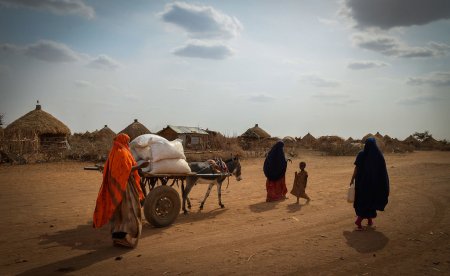
The sharp increase in food assistance needs, which is over 70 percent higher than food crises in 2016 and 2017, is primarily driven by the impacts of severe drought across the eastern portion of the region and by the impacts of conflict, especially in northern Ethiopia.
Most areas of the Horn are experiencing water shortages and record-low vegetation conditions, reflecting both degradation of pasture for livestock and wilting or absent crop growth. Household purchasing power is also declining due to a sharp increase in staple food prices, declining livestock prices, and low agricultural labor demand. At the same time, the conflict in northern Ethiopia has led to severe food availability and access constraints for millions of households.
Given the potential for a historic fourth consecutive poor rainfall season in early 2022 and given the likelihood that conflict in northern Ethiopia will persist, there is high concern that household food consumption gaps will widen and drive rising levels of acute malnutrition and mortality through mid-to-late 2022.
Large-scale humanitarian food and livelihood assistance, coupled with unhindered humanitarian access to conflict-affected areas, is urgently needed to save lives and livelihoods.
Source: FEWS NET